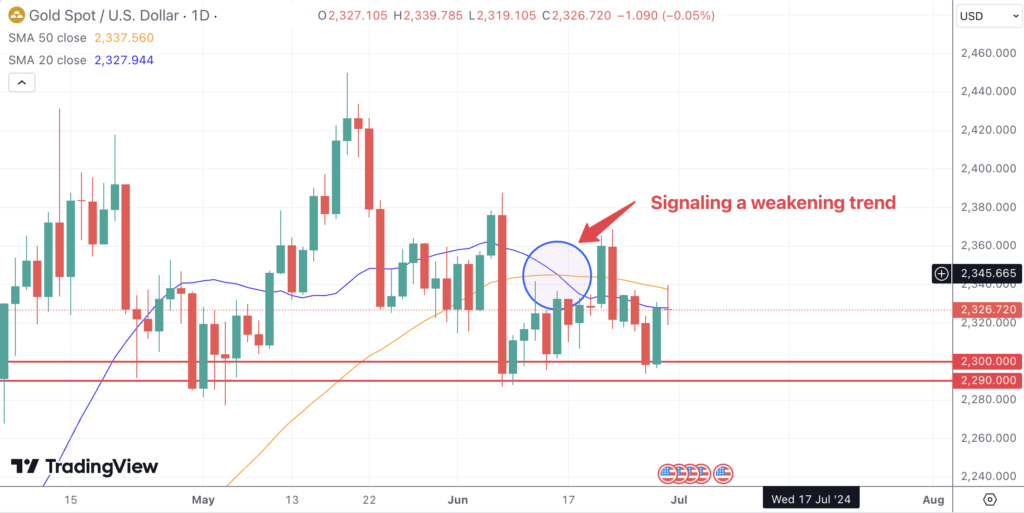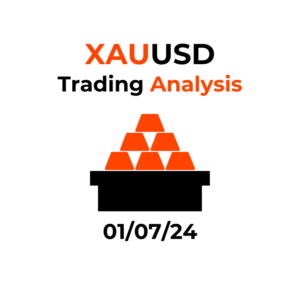Key Takeaways
- Gold prices have struggled to break through key resistance levels, particularly around the 50-day MA at $2,340.
- The technical outlook remains challenging, with the 20-day MA below the 50-day MA and critical support levels at $2,300 and $2,277.
- Market sentiment is influenced by mixed signals from the Federal Reserve and key US economic data.
- Upcoming events, including the US employment report and Fed speeches, will be crucial in determining the direction of gold prices.
- The short-term outlook for gold remains uncertain, with potential for both downside risks and support depending on economic data and Fed policy signals.
Market Dynamics and Recent Performance
Gold prices have been oscillating around key levels, struggling to break through significant resistance points. Last week, the price of gold failed to capitalize on the weaker US dollar following the release of the Personal Consumption Expenditures (PCE) inflation data. Although there were some signs of buying interest, particularly due to geopolitical tensions and political uncertainties in Europe, the overall market sentiment remained cautious. Gold prices hovered around $2,325, unable to maintain a steady climb.
Technical and Fundamental Influences
From a technical perspective, gold is facing a challenging environment. The 20-day Moving Average (MA) has crossed below the 50-day MA, signaling a weakening trend. Resistance at the 50-day MA, currently around $2,340, has proven difficult to overcome. A sustained move above this level is critical for any potential recovery. On the downside, immediate support is seen at $2,300, with further support around $2,290. The key level to watch is $2,277, which if breached, could confirm a reversal of the bullish trend, potentially leading to a significant decline.

Fundamentally, the market is awaiting critical US economic data and speeches by Federal Reserve officials. Last week’s data showed the annual core PCE Price Index rising 2.6% in May, down from 2.8% in April, which has led traders to increase bets on a potential Fed rate cut later this year. However, the market remains on edge as mixed signals from Fed officials create uncertainty. Strong economic data, such as robust job openings and manufacturing PMIs, could pressure gold prices further, while weaker data and dovish Fed signals might provide support.
Looking Forward
In the upcoming week, several key events and data releases will likely influence gold prices. The US employment report, manufacturing and services PMIs, and speeches by Federal Reserve officials, including Jerome Powell, will be closely monitored. These events will provide insights into the health of the US economy and potential shifts in Fed policy. If economic data suggests continued strength, the likelihood of rate cuts may diminish, putting downward pressure on gold. Conversely, any signs of economic weakness could bolster gold as a safe-haven asset.

